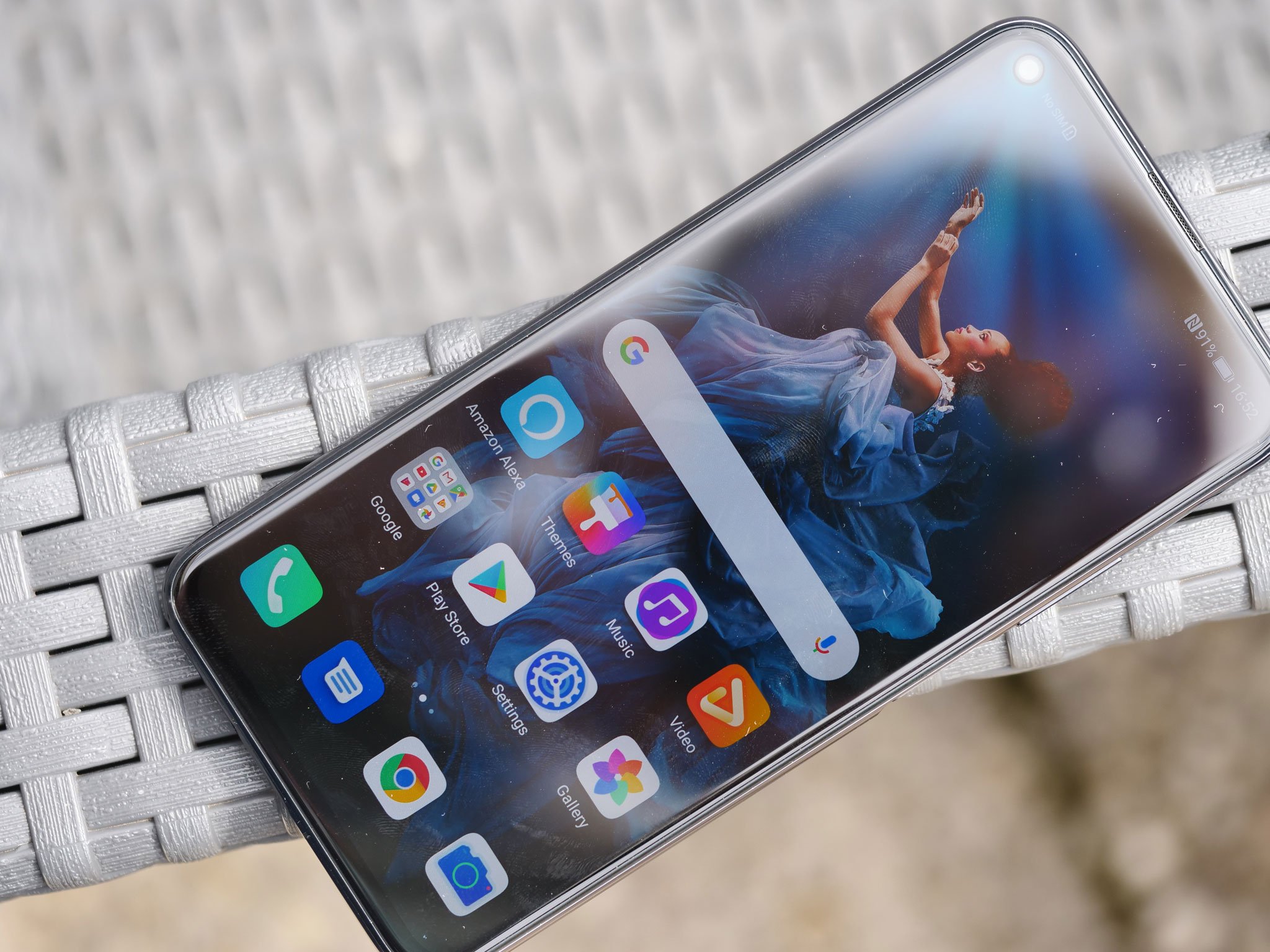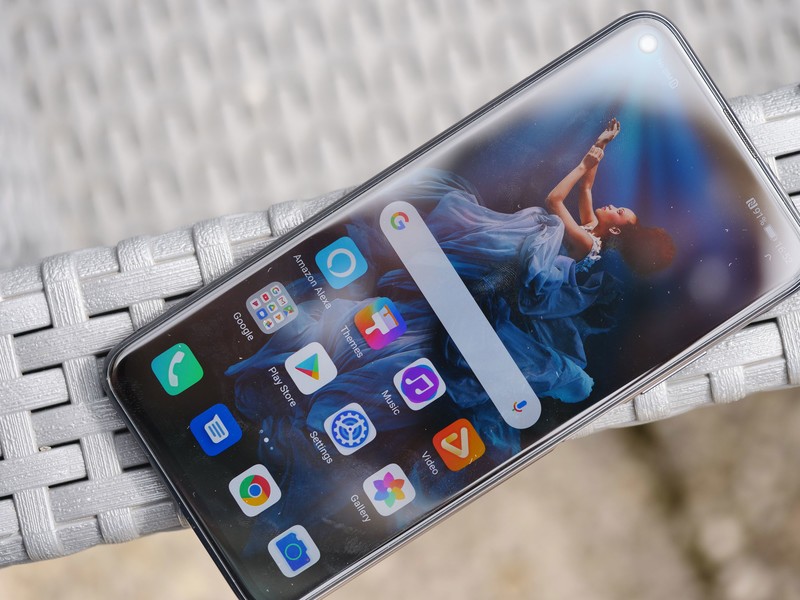Honor 20 review: Flagship performance for £400

By definition, the Honor 20 is almost destined to live in the shadow of its big brother, the Honor 20 Pro. After first reviewing that device, it's easy to see it as a cut-down version of Honor's true flagship. But although it lacks the "Pro" moniker, this affordable flagship is no amateur. The standard Honor 20 delivers the same core experience as the more expensive model at a competitive price point of just £400. That's significantly less than the OnePlus 7, and within striking distance of Google's Pixel 3a series.
So if you're not inclined to splash your cash on the more expensive version, the Honor 20 could be a decent choice.
The Good
- Solid build quality
- All-screen display with hole punch camera
- Dependable main and ultrawide cameras
- Excellent battery life
The Bad
- No water resistance
- Mushy haptic motor
- Ho-hum rear panel design

The good stuff
What I love about the Honor 20
Aside from the switch to a more run-of-the-mill glass-backed chassis, there's little visual difference between the Honor 20 and Honor 20 Pro. The standard model feels somewhat less hefty, likely due to the smaller battery — 3,750mAh versus the Pro's 4,000. But the footprint and form factor are essentially identical. The Honor 20 is a comfortable, one-handable phone clad in pretty much the same materials as every high-end handset. Metal around the sides — a little slippery, but not excessively so — and glass on the rear.


Honor 20 hardware specifications
Be an expert in 5 minutes
Get the latest news from Android Central, your trusted companion in the world of Android
| Category | Features |
|---|---|
| CPU | Huawei Kirin 980 |
| RAM | 6GB |
| Storage | 128GB |
| Display | 6.26-inch IPS LCD, Full HD+ 1080x2340 |
| OS | Android 9 Pie, Magic UI 2.1 |
| Front camera | 32MP f/2.0 |
| Main camera | 48MP Sony IMX 586, f/1.8 |
| Ultrawide camera | 16MP f/2.2 |
| Macro camera | 2MP f/2.4 |
| Depth sensor | 2MP f/2.4 |
| Weight | 174g |
| Battery | 3,750mAh, Super Charging |
| Headphone jack | No |
| Water resistance | No |
On the back, in the black model I've been using, there's a subtle reflective pattern. And around the front, a familiar full-screen Full HD+ IPS LCD panel at 6.26 inches. The display appears identical to the Honor 20 Pro's panel, which is to say it's reasonably bright in daylight, with punchy colors and no outstanding issues in terms of color reproduction or viewing angles. For some people the Honor 20 series' hole punch cameras are like a blemish then can never unsee. I'm indifferent, and Honor has actually leaned into this particular design quirk with some fun preloaded wallpapers that hang a lantern on the camera hole.
Audio reproduction is decent, though the same caveats apply as with the Honor 20 Pro — you'll get no stereo audio here, but the output from the single bottom-firing speaker is appropriately beefy. Just don't expect flawless clarity if your hand is blocking it while watching landscape video or gaming.
Performance, too, is largely identical, thanks to the proven performance of Huawei's Kirin 980 processor. In the Honor 20, that's paired with an ample 6GB of RAM and 128GB of storage. Day-to-day apps are speedy to load and smooth to operate, with essentially no difference in responsiveness compared to more expensive Kirin 980 phones like the Huawei P30 series.
The Honor 20 is just as speedy as more expensive flagships.
Honor has also managed to bring across the bulk of the Honor 20 Pro camera experience to the less expensive model. The biggest compromise is the lack of any dedicated telephoto camera — instead, the Honor 20 packs the same 48-megapixel Sony IMX 586 sensor as the Pro, only without optical image stabilization and behind a slightly slower f/1.8 lens. That's paired with a 16-megapixel f/2.2 ultrawide camera — the same you'll find on more expensive Honor and Huawei phones — along with a dedicated depth-sensing camera and 2MP macro unit.
The ultrawide camera is essentially identical to that of the Pro, producing dramatically different angles compared to the main sensor. Daylight captures are decent, though with diminishing returns in darker scenes. Meanwhile, the Honor 20's main camera falls somewhat short of its big brother in darker conditions, though overall performs well. Honor's AI processing and handheld night mode easily picks up the slack, providing impressive snaps even in dark indoor conditions, or by streetlight outdoors.



Around the front, the Honor 20 Pro's proven selfie camera returns, with an impressive 32-megapixel resolution that's well suited to moderate-to-well-lit scenes. While it can't match the Google Pixel 3 series' Night Sight selfie camera, it's on par with what we'd expect from a mainstream Android flagship.
A solid main camera and impressive wide-angle capabilities round off this quad-camera setup.
The front camera pulls double duty for face recognition, which works just as well as every Kirin 980 handset we've tested. It's fast and accurate, and a useful alternative to fingerprint unlock. Speaking of which, the Honor 20's side-mounted fingerprint scanner sidesteps the current in-screen fingerprint trend with a sensor that's both faster and more reliable, located in a recessed area along the right-hand-side. It's built into the phone's power button, and you can control whether the sensor is always active, or whether you need to press the key itself first.

Honor's Magic UI makes the jump across to the smaller model, and as usual, it's a bit of a mixed bag, though generally speedy and usable. Magic UI 2 is essentially a re-skinned version of Huawei's EMUI 9, with a similarly iOS-inspired design language, bright whites and blue hues throughout, and software controls relocated to the lower area of the screen for easier one-handability.
Like the Huawei mothership, Honor takes a heavier approach towards Android customization than its rivals, but this also results in a more feature-rich experience, possibly at the expense of aesthetics.
One of the many areas touched by Magic UI is power management, where Honor and Huawei phones typically excel. And although the Honor 20 has only a 3,750mAh battery — down from the 4,000mAh cell of the Honor 20 Pro — I didn't notice any major gaps in longevity compared to the higher-end model. You're still easily looking at a full day of use, with between five and six hours of screen-on time, and fast charging provided through Honor's 22.5W SuperCharge standard.

The not-so-good
What I don't love about the Honor 20
For me, the most noticeable downside of the Honor 20's day-to-day user experience has been something surprisingly small — the phone's decidedly low-end haptic motor. As we mentioned in our Honor 20 Pro review, this isn't even close to the tight haptic feedback provided by OnePlus's latest phones, and feels mushy and imprecise while typing. Ultimately, just like the Honor 20 Pro, I ended up turning off haptic feedback altogether because of this.
Thanks to several months with the Honor View 20 and Huawei P30 Pro, I'm fairly well accustomed to EMUI and Magic UI, which, as mentioned, are pretty much identical in terms of their feature sets. As we've mentioned, Magic UI provides an extensive feature set, even including niche features like IR input support for TVs, air conditioners and other products. Honor is also ahead of the curve with its gesture navigation setup, which happens to be nearly identical to what's coming in this year's Android Q release. But at the same time, the visuals and aesthetics of Magic UI feel... somewhat less than magical. The animations, fonts, drop shadows and icons are less in keeping with Google's vision of Android than most rivals, and instead feel like an imitation of iOS.


While the overall camera experience of the Honor 20 is solid and dependable, the value of the dedicated 2-megapixel "super macro" camera is extremely questionable. If I were more cynical, I'd suspect it's there just to up the camera count from three to four. It's the same disappointing sensor and lens combo used in the Honor 20 Pro, which is only good for firing out poorly-focused, low-resolution macro pics that aren't much use for anything besides basic sharing on the web.
When the ultrawide and standard cameras are so good, there's pretty much no reason to bother with the low-resolution standalone macro shooter.

The final verdict
Should you buy the Honor 20? Yes
One of the biggest reasons to hold fire on purchasing a Huawei or Honor phone is the company's ongoing issues with the U.S. government, which has cast doubt on future software upgrades beyond August 2019. Honor has yet to publish an official software update schedule for the Honor 20 series, but AC understands from a trusted source that the Honor 20 will indeed be receiving Android Q, in addition to security patches promised to other recent Huawei phones.
4 out of 5
Purchasing an Honor 20 might still be more of a gamble than a brand not affected by geopolitical headwinds, but it's hard to argue with the overall quality of the product on offer -- especially considering the £400 price point. That's a Pixel 3a price tag for hardware which comes close to rivaling the Huawei P30 series. You're not getting the full experience of the Honor 20 Pro -- but you're getting pretty close to it, with the same display, main camera sensor and level of performance.
For all those reasons, we'd definitely recommend you take a look at the Honor 20 if you're seeking an affordable yet capable flagship phone.

Considerable value for your smartphone money.
It's not a "Pro" model, but the Honor 20 is well worth your attention if you're shopping in the increasingly competitive mid-range space. An impressive camera, solid fundamentals and impressive all-screen front are all reasons to take a punt on Honor's latest.

Alex was with Android Central for over a decade, producing written and video content for the site, and served as global Executive Editor from 2016 to 2022.
